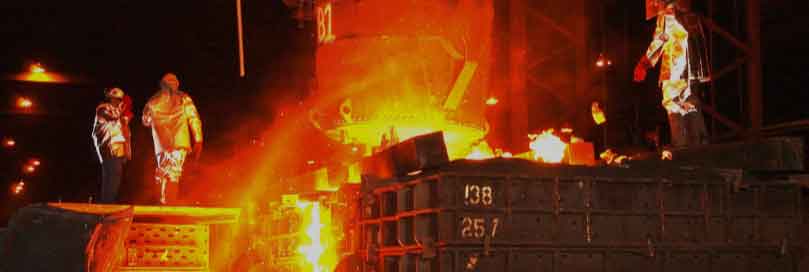Foundry technology plays a crucial role in infrastructure development by providing the necessary components for various construction projects. It involves the process of melting and shaping metals to create intricate and customized parts that are essential for infrastructure projects such as buildings, bridges, roads, and other structures.

Here are some key ways in which foundry technology contributes to infrastructure development:
- Component Manufacturing: Foundry technology enables the production of a wide range of metal components used in infrastructure projects. These components include beams, columns, girders, brackets, and other structural elements. By using foundry technology, these components can be manufactured with precision and in large quantities, meeting the specific requirements of each project.
- Material Flexibility: Foundry technology allows for the use of various metals and alloys, such as steel, iron, aluminum, and copper, in infrastructure construction. Each metal has its own properties, such as strength, durability, and corrosion resistance. By selecting the appropriate metal for a specific component or structure, engineers can ensure the longevity and reliability of the infrastructure.
- Customization and Innovation: Foundry technology enables the creation of customized components that fit the unique requirements of infrastructure projects. By using casting techniques, intricate shapes and designs can be achieved, allowing for innovation and architectural creativity. This flexibility in design helps in optimizing the performance and efficiency of infrastructure structures.
- Quality and Strength: Foundry technology ensures the production of high-quality, structurally sound components. By employing quality control measures during the casting process, defects and impurities can be minimized or eliminated. This ensures that the manufactured components have the necessary strength and reliability to withstand the stresses and loads experienced in infrastructure applications.
- Cost-effectiveness: Foundry technology offers cost-effective manufacturing solutions for infrastructure projects. The ability to produce components in large quantities with consistent quality helps in reducing production costs. Additionally, the flexibility to use different metals allows for optimization of material selection based on cost and performance, contributing to overall project cost savings.
- Repair and Maintenance: Foundry technology also plays a role in infrastructure repair and maintenance. When components or structures suffer damage or wear over time, foundries can provide replacement parts that match the original specifications. This facilitates the efficient restoration of infrastructure, ensuring its continued functionality and safety.
- Sustainable Practices: Foundry technology is evolving to incorporate sustainable practices. Efforts are being made to reduce energy consumption, minimize waste generation, and implement environmentally friendly processes. This aligns with the increasing focus on sustainable infrastructure development and contributes to reducing the environmental impact of construction projects.
In conclusion, foundry technology is a vital component of infrastructure development. It enables the manufacturing of high-quality, customized components while offering cost-effective and sustainable solutions. As infrastructure demands continue to grow, the role of foundry technology will remain crucial in shaping the future of construction and ensuring the durability and efficiency of our built environment.
